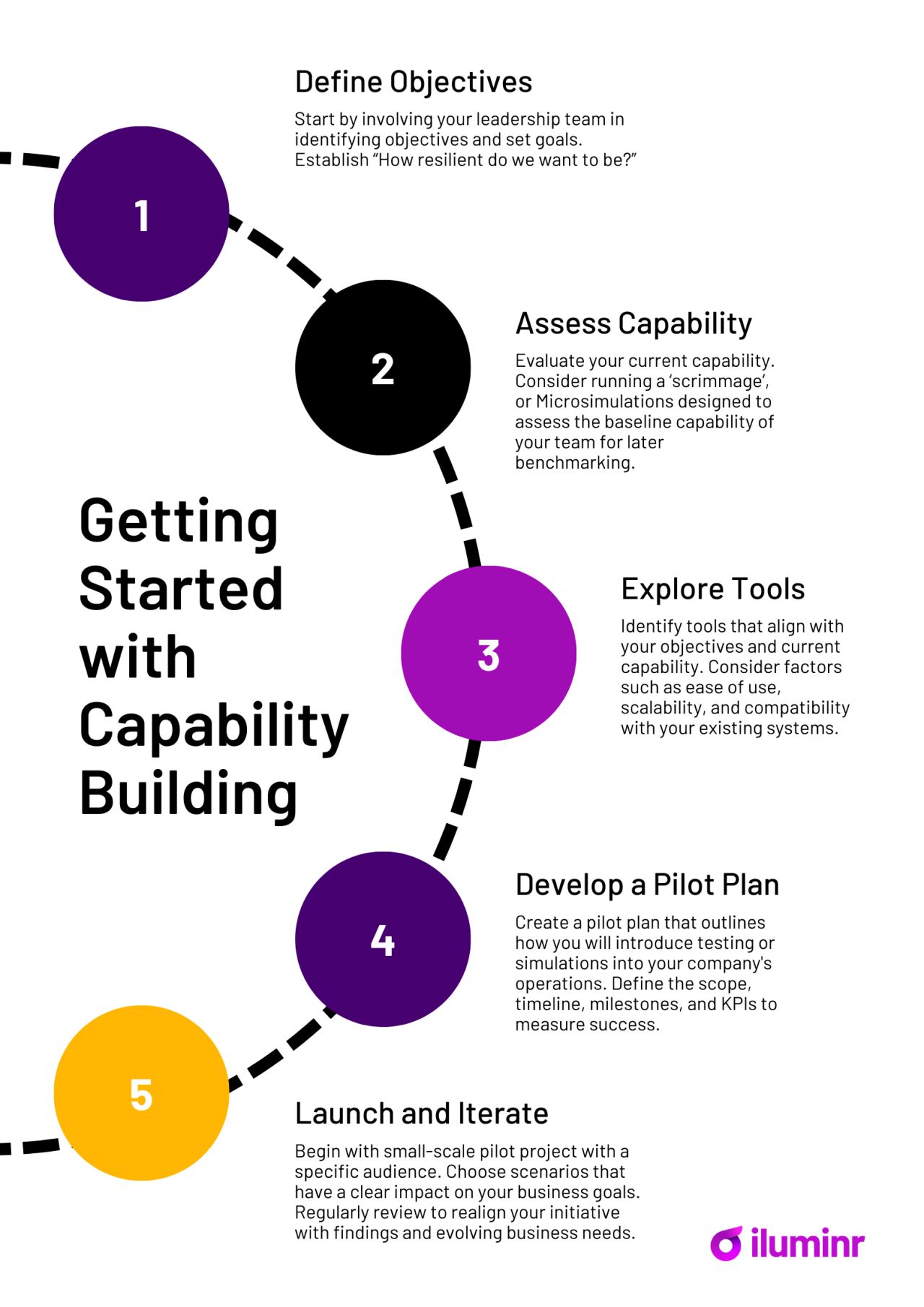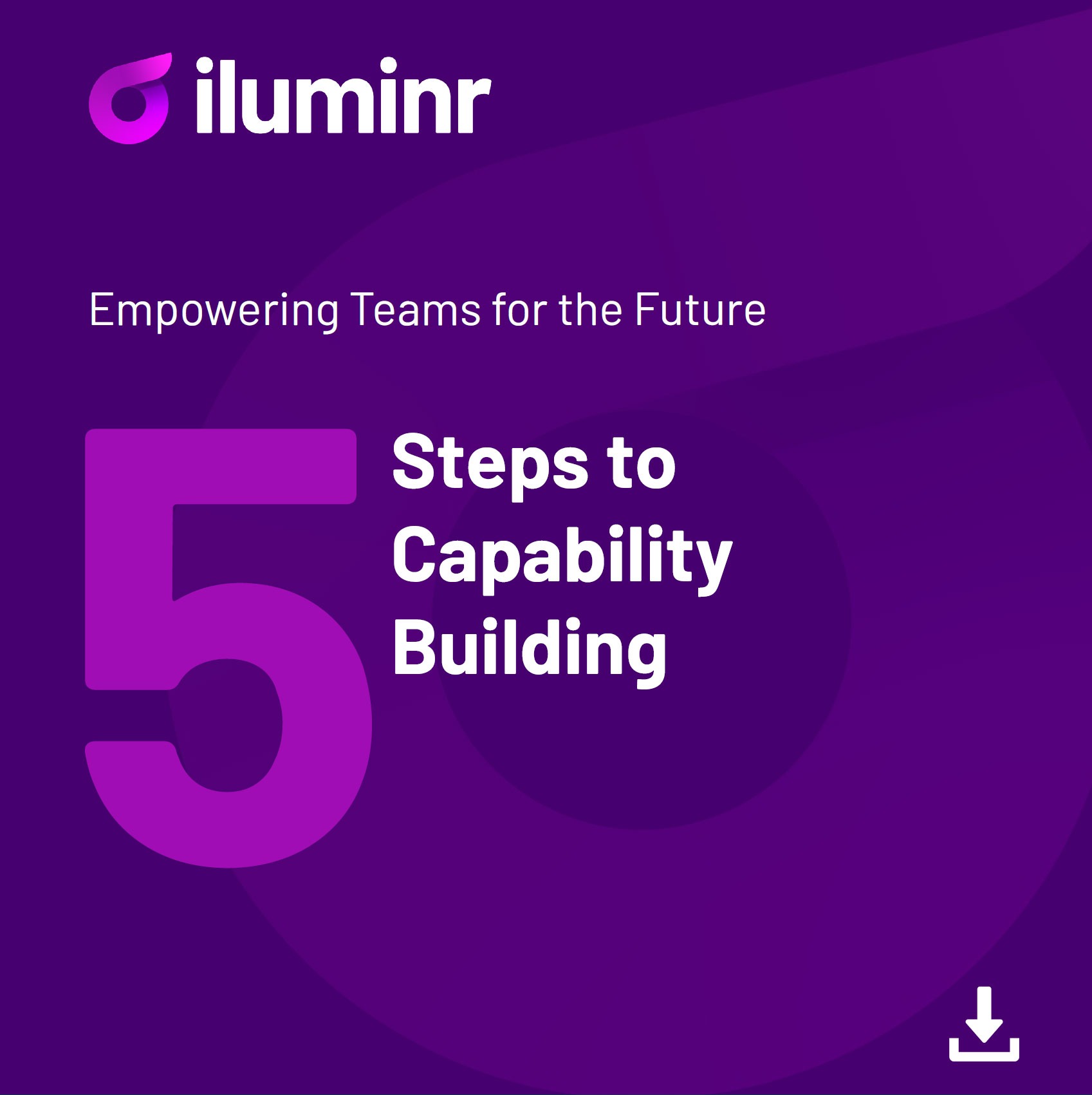Why do 80% of leaders prioritize high-capability teams over detailed plans?
Because unlike rigid plans, a team’s capability is adaptable, resilient, and equipped to innovate:
- Adaptability over rigidity: Plans can be inflexible, but a capable team can pivot and adapt to unexpected changes.
- Capability fosters collaboration and innovation: A skilled team is about fostering a collaborative environment that breeds innovation.
- Navigating the unknown: In a rapidly changing world, a capable team can nvaigtae the unknown and thrive.
- The role of simulation: Building capability through simulations revleas what your team can do versus what you expect them to do.
- Iterative development: Developing team capability is a continuous journey, and evolves through experiences and adjustments, making room for growth at any stage of your program.

Looking to build the response capability of your team? Here are the 5 essential steps to capability building
1. Define Objectives
Start by involving your leadership team in identifying objectives and set goals.
Establish “how resilient do we want to be?”
2. Assess Capability
Evaluate your current capability.
Consider running a ‘scrimmage’ or Microsimulations designed to assess the baseline capability of your team for later benchmarking.
3. Explore Tools
Identify tools that align with your objectives and current capability.
Consider factirs such as ease of use, scalability, and compatibility with your existing systems.
4. Develop a Pilot Plan
Create a pilot plan that outlines how you will introduce testing or simulations into your company’s operations.
Define the scope, timeline, milestones and KPIs to measure success.
5. Launch and Iterate
Begin with a small-scale pilot project with a specific audience.
Choose scenarios that have a clear impact on your business goals.
Regularly review to realign your initiative with findings and evolving business needs.
Download the 5 steps to capability building below. To begin your capability building journey with iluminr, book a team demo today.















